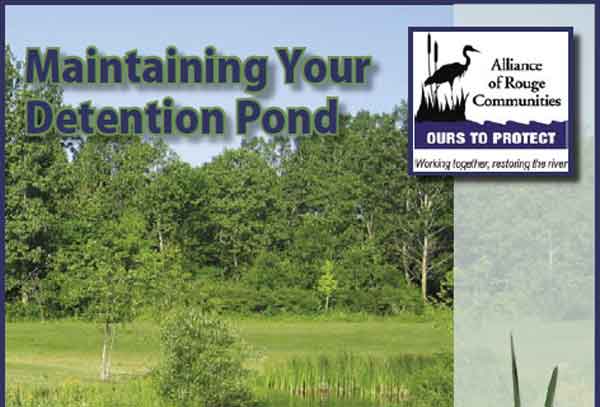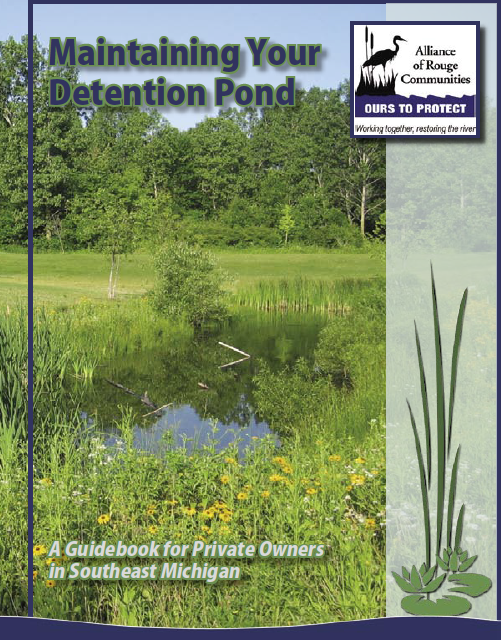Editor’s note: While this is about Michigan land and water, there is good information in here for any horse farm owner who has a pond or water detention area.

Stormwater is defined as water from a storm event (rain, melting snow, hail or sleet) that runs off rather than soaks into the ground. This runoff collects sediment, pesticides, fertilizers, road salt, oil, yard waste, pet waste, litter or any other pollutant that it comes across along its path, and transports it to nearby drains or ditches. Both local and federal laws, such as the Clean Water Act, require or encourage the control of stormwater in urban areas as a way of protecting Michigan’s water resources.
One widespread solution to managing stormwater is the installation of detention ponds, man-made depressions that collect and clean stormwater runoff. These ponds contribute to efforts to improve water quality in nearby streams, rivers and lakes.
Detention ponds are quite common in the landscape, particularly in areas of southeast Michigan where vast expanses of highly developed urban and suburban areas have eliminated native vegetation and soils have been replaced by impervious surfaces (sidewalks, streets, rooftops, etc.). Impervious surfaces do not allow water to naturally filter into the ground to recharge groundwater supplies and eventually discharge into nearby bodies of surface water. As a result, less rainwater soaks into the ground and more stormwater runs off the land at a faster rate.
In fact, many developments built after the mid-1980s may have detention ponds that were installed to help manage stormwater. They do this by collecting and detaining stormwater to slow down the rate of runoff, as well as filtering the runoff to trap sediment and other pollutants that can clog waterways and alter habitat for fish and wildlife species. The end result is that detention ponds help protect public health and safety as well as private and public lands by reducing flooding.
The Alliance of Rouge Communities developed the guidebook, “Maintaining your Detention Pond” to help private owners better understand detention pond basics. It focuses on key aspects of maintenance, including the importance of inspecting and maintaining storm sewer system components, essential vegetation management, preventing algae blooms, naturalizing ponds, as well as other good housekeeping practices to enhance detention ponds and minimize long-term maintenance. It also includes information on how a detention pond contributes to a healthy aquatic ecosystem, and retrofits and enhancements that can improve the functionality of an existing pond.
For additional information about managing stormwater to protect water quality, read the Michigan State University Extension article, “Landscaping for Water Quality: Garden Designs for Homeowners”.
More information on lakes, streams and watersheds can be found on the Michigan State University Extension website. This article was published by Michigan State University Extension. For more information, visit http://www.msue.msu.edu. To have a digest of information delivered straight to your email inbox, visit http://bit.ly/MSUENews. To contact an expert in your area, visit http://expert.msue.msu.edu, or call 888-MSUE4MI (888-678-3464).




